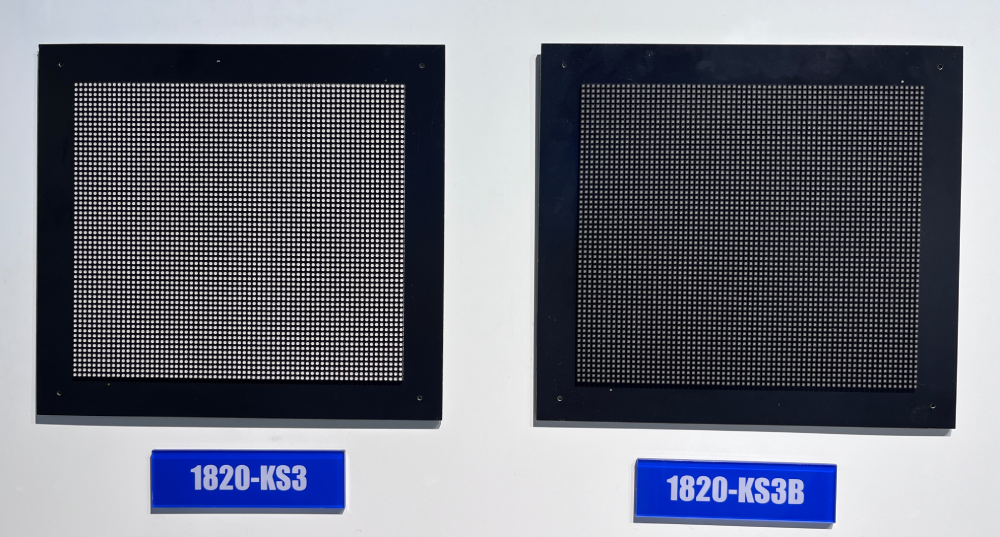When you’re about to buy an LED display, salesmen are likely to claim that their screens have much higher contrast ratio than their competitors’, and when you come to the catalogue of an LED display, there ought to be a parameter stating the contrast ratio. Why manufacturers emphasize contrast ratio so much? Because contrast ratio really affects the overall output quality of images and videos of an LED display. Let’s go dive into the details.

The contrast ratio of an LED display refers to the difference between the brightest and darkest areas of the display, typically measured in terms of luminance. It represents the display’s ability to produce distinct levels of brightness and darkness, which contributes to the perceived image quality and depth.
The contrast ratio is expressed as a ratio or a numerical value, such as 1000:1 or 5000:1. In these examples, the first number represents the luminance of the brightest area (white) on the display, while the second number represents the luminance of the darkest area (black) on the display.
A higher contrast ratio indicates a greater difference between the brightest and darkest areas, resulting in more vibrant and visually striking images. It allows for better differentiation of details and enhances the overall image quality.
It’s worth noting that contrast ratio specifications can vary depending on the manufacturer and the specific display technology used. Some manufacturers may provide static contrast ratios, which measure the ratio of luminance between a fully illuminated white pixel and a completely black pixel. Others may provide dynamic contrast ratios, which account for the display’s ability to adjust brightness levels dynamically based on the content being displayed.
When comparing contrast ratios between different displays, it’s important to consider factors such as the measurement method used, the display technology, and the viewing conditions. Additionally, personal preferences and the specific application of the display should be taken into account, as different environments and content types may benefit from different contrast ratios.
LEDs (Light-Emitting Diodes) play a significant role in determining the contrast ratio of an LED display. Here’s how LEDs affect the contrast ratio.

Kinglight offers LEDs with different designs for different contrast ratios to suit different application scenarios
Luminance Output: LEDs are responsible for producing the light that forms the display image. They can emit high levels of brightness, allowing for bright and vivid images. The luminance output of LEDs contributes to the overall contrast ratio of the display.
Black Level Performance: LEDs also affect the black level performance of an LED display. When the LEDs are turned off or produce no light, they contribute to the display’s ability to achieve deep, true blacks. This is crucial for achieving a high contrast ratio, as a display with a low black level can enhance the perceived contrast and overall image quality.
LED Placement and Design: The arrangement and design of the LEDs on the display panel can also impact the contrast ratio. Displays with well-designed LED layouts can minimize light leakage and improve light uniformity across the screen, leading to better contrast performance.
It’s important to note that the contrast ratio of an LED display is not solely determined by the LEDs themselves. Other factors, such as the display panel technology (e.g., LCD, OLED), the display’s optical design, and the image processing algorithms, also contribute to the overall contrast ratio.
When selecting an LED display, it’s advisable to consider the display’s specifications, including the contrast ratio, and evaluate it in combination with other factors like viewing conditions, content type, and personal preferences to ensure it meets your specific requirements.
Improving the contrast ratio of an LED screen involves various considerations, ranging from individual pixels to the entire screen. Here are some techniques to enhance the contrast ratio.
Higher Quality LEDs: Choose LED displays with high-quality LEDs that offer better luminance output and black level performance. LEDs with higher contrast ratios themselves can contribute to improving the overall contrast ratio of the screen.

Kinglight 2020-P3 LED utilizes full black frame design to prevent light leakage and improve contrast ratio
Local Dimming: Look for LED displays that incorporate local dimming technology. This technique allows specific areas or zones of the screen to be dimmed independently, achieving deeper blacks and enhancing the contrast ratio. Local dimming provides better control over the backlight, minimizing light leakage and improving contrast performance.
Pixel-Level Control: Consider displays that offer pixel-level control, such as OLED displays. OLEDs can turn off individual pixels completely, resulting in true blacks and infinite contrast ratios. This pixel-level control enhances the contrast ratio and delivers superior image quality.
Optimize Brightness Levels: Adjust the brightness levels of the LED display to an appropriate level. Avoid setting the brightness too high, as it can lead to reduced contrast and wash out the darker areas. Find a balance that allows for vibrant images while preserving the contrast between bright and dark elements.
Calibration: Calibrate the LED display regularly to ensure accurate color reproduction and optimal contrast performance. Proper calibration helps maintain consistent brightness and color levels across the screen, maximizing the contrast ratio potential.
Ambient Light Control: Control the ambient light conditions in the display environment. Minimize external light sources that can wash out the screen and reduce contrast. Consider using curtains, blinds, or ambient light sensors to adjust the display’s brightness based on the surrounding light levels.
Optimal Viewing Angle: Position the LED display to optimize the viewing angle for viewers. Viewing the screen straight-on yields the best contrast performance. Avoid extreme viewing angles that can result in reduced contrast and color accuracy.
Black Matrix Design: Choose LED displays with an optimized black matrix design. The black matrix helps minimize light leakage between pixels and improves the differentiation between dark and bright areas. A well-designed black matrix enhances the contrast ratio and overall image quality.
High-Quality Content: Utilize high-quality content that is optimized for the LED display’s specifications. Ensure that the content takes advantage of the display’s capabilities to showcase a wide range of brightness and contrast levels effectively.
Regular Maintenance: Perform regular maintenance tasks, such as cleaning the display surface, inspecting connections, and updating software/firmware. A well-maintained LED display can deliver optimal performance, including contrast ratio.
By considering these techniques, both at the individual pixel level and the entire screen level, you can improve the contrast ratio of an LED display and enhance the visual experience for viewers.